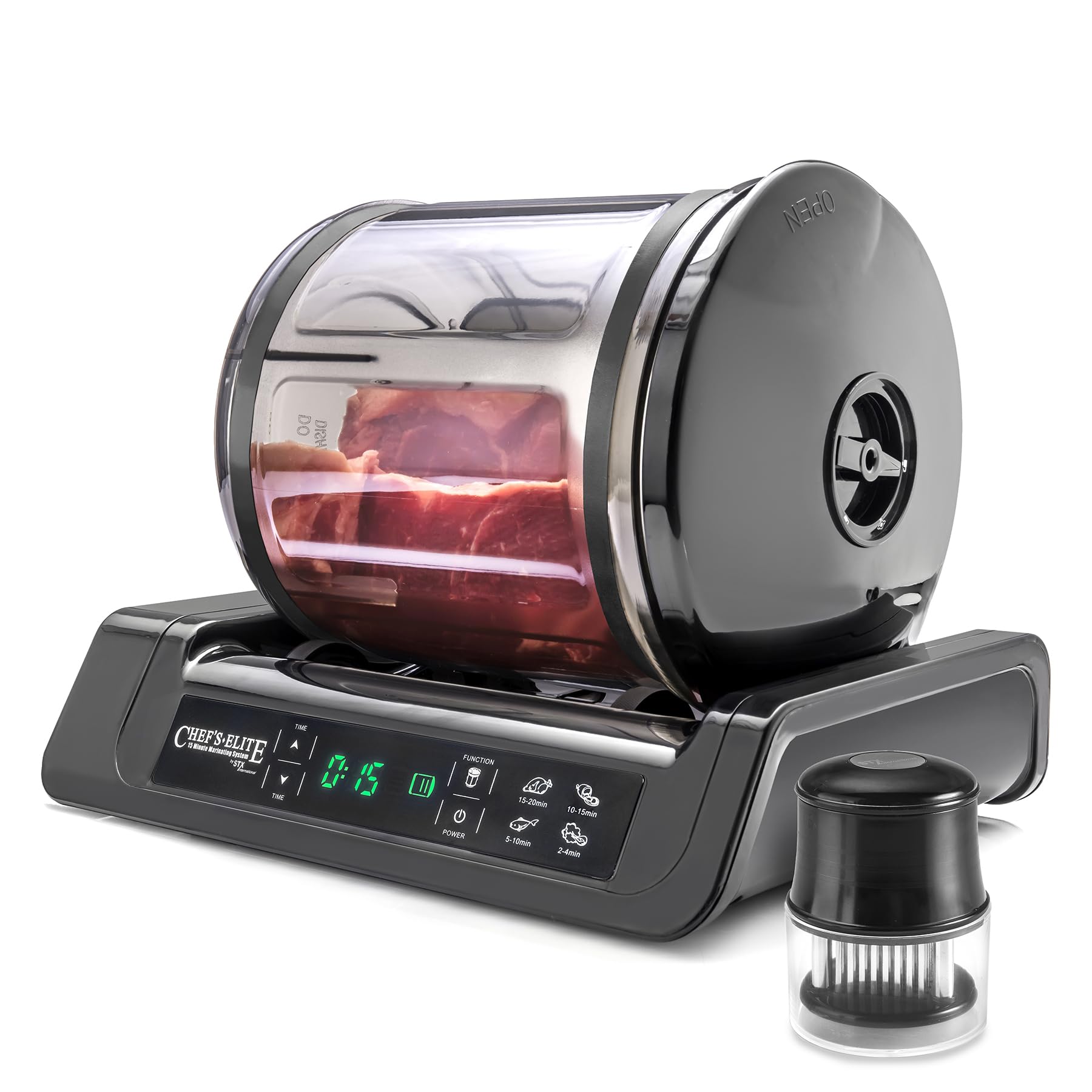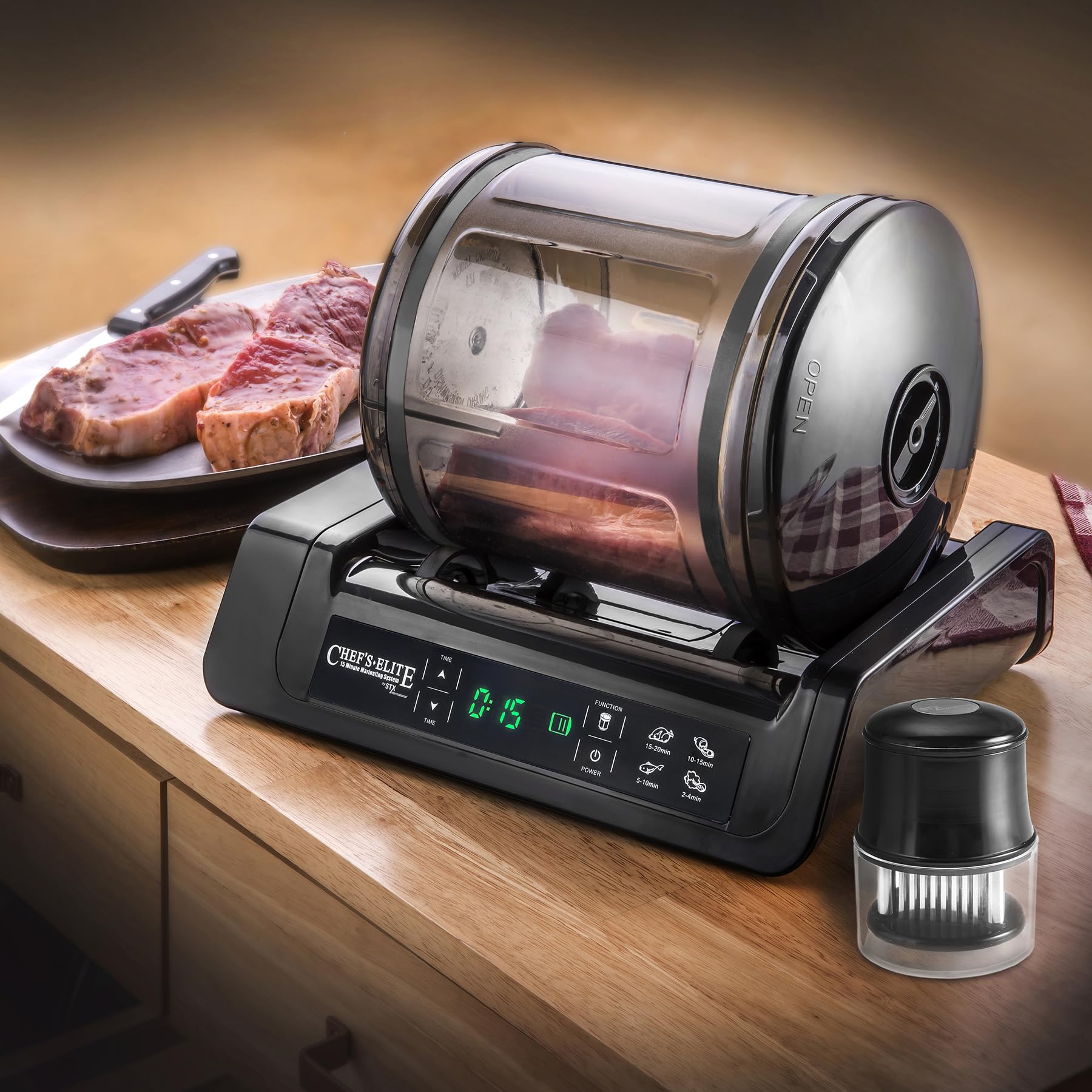10 years of experience as a food machinery equipment manufacturer
10 years of experience as a food machinery equipment manufacturer
The marinator vacuum tumbler represents a significant advancement in food preparation technology, particularly within commercial kitchens, butcheries, food processing facilities, and even for dedicated culinary enthusiasts. This equipment is engineered to enhance the marination process, offering substantial improvements in flavor infusion, product tenderness, and operational efficiency compared to traditional marination methods.

A marinator vacuum tumbler is a specialized machine designed to impregnate food products, primarily meats, poultry, and seafood, with marinades, brines, or spice blends more effectively and rapidly. It combines two key principles: vacuum technology and mechanical tumbling. The core components typically include a rotating drum to hold the food and marinade, a vacuum pump to remove air from the drum, and a control system to manage the tumbling cycles and vacuum levels.
The process begins by placing the food product and the desired marinade into the drum. Once sealed, the vacuum pump evacuates the air from the drum. This creates a low-pressure environment which has several effects: it expands the cellular structure of the food, removes air from within the product’s pores and between muscle fibers, and de-aerates the marinade itself. The tumbling action, which can be continuous or intermittent, then gently massages the product. This mechanical action flexes the muscle fibers, further aiding marinade penetration and ensuring even distribution. When the vacuum is periodically released or at the end of the cycle, the atmospheric pressure helps to drive the marinade deep into the food product, filling the voids previously occupied by air.
The adoption of marinator vacuum tumblers brings forth a multitude of advantages for food preparation:
When selecting a marinator vacuum tumbler, several features and specifications are important to evaluate based on intended use:
Marinator vacuum tumblers are versatile and find applications in various sectors:
Commercial Foodservice: Restaurants, caterers, and institutional kitchens use them to prepare consistently flavored and tender meats, poultry, and seafood for their menus, reducing prep time significantly.
Butcher Shops and Delicatessens: These establishments can create value-added products, such as pre-marinated steaks, chicken pieces, or ribs, offering convenience to their customers and differentiating their product range.
Meat and Poultry Processing Plants: Large-scale industrial tumblers are integral to the production of items like bacon, ham, jerky, marinated chicken wings, and other processed meat products, ensuring uniformity and maximizing yield for packaged goods.
Seafood Industry: Tumblers are used to marinate fish fillets, shrimp, and other seafood, enhancing flavor and improving texture.
Artisan Producers and Competitive Cooks: Small-scale producers of specialty items and barbecue competitors leverage smaller tumblers to achieve superior results in flavor and tenderness that can give them a competitive edge.

Effective use of a marinator vacuum tumbler involves understanding the interplay of product type, marinade composition, vacuum level, and tumbling time. Typically, operators will load the product and marinade (often at a specific percentage of the product weight), seal the drum, and select or program the desired cycle. It’s important not to overload the tumbler, as this can impede proper tumbling action and marinade distribution; a fill level of 50-70% of the drum capacity is often recommended.
Regular and thorough cleaning is paramount. After each use, the drum and all contact parts must be meticulously cleaned and sanitized to prevent microbial growth and cross-contamination, especially when switching between different types of products or marinades. Routine maintenance, as per the manufacturer’s guidelines, typically includes checking the vacuum pump oil (if applicable), inspecting seals and gaskets, and ensuring all moving parts are functioning correctly. This proactive approach ensures longevity and consistent performance of the equipment.
In conclusion, the marinator vacuum tumbler stands as a powerful tool for enhancing food quality and operational efficiency in any setting where marination is a key process. By leveraging the principles of vacuum and mechanical action, these machines offer a reliable method to produce deeply flavored, tender, and consistent food products while saving time and potentially increasing yields.
